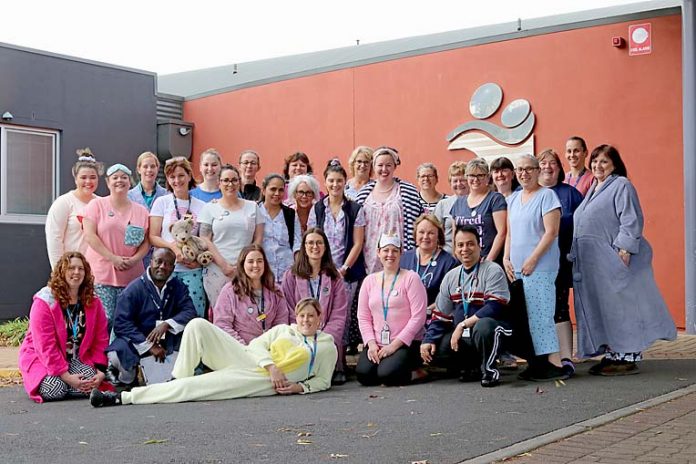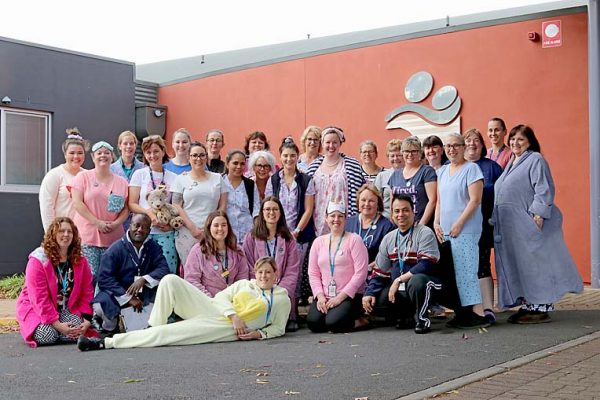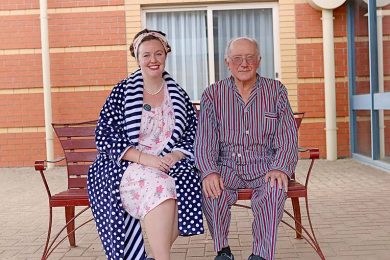

Picture: MOLLY TAYLOR
COMFORTABLE and cosy pyjamas have been Mount Gambier and District Hospital staff’s clothing of choice over the past three days in a bid to get patients out of bed, dressed and moving.
As part of the End Pyjama Paralysis campaign, staff across the region’s health facilities have adorned their sleepwear to motivate patients not to become bed-ridden and rebuild their strength.
Mount Gambier acting director of nursing and midwifery Pam Schubert said 10 days of bed rest for someone over 80 can age muscles by up to 10 years.
“For someone at an advanced age, getting up and moving around could be the difference between going home or going to an assisted care facility,” Ms Schubert said.
“The faster we can get people back into their normal everyday habits, the faster they can get out of hospital and recover in the comfort of their own home.
“We also want to help our patients and their families to set goals for their care and recovery and hope seeing staff in their pyjamas will help them to do this.”

Launched in the United Kingdom, Ms Schubert said a staff member saw the movement on social media from Victoria and New South Wales facilities.
Proving beneficial for patients, Ms Schubert said it had already produced amazing results.
“Activities do not need to be extreme it is just about encouraging simple, everyday activity,” she said.
“Instead of people forming a negative ‘sick role’ which prevents a speedy recovery, we have been working with patients to set goals for further progression.
“In the end a little bit of movement decreases pressure injuries, muscle weakness, fatigue and tripping and falling.”
Ms Schubert said the hospital would continue to adopt the initiative moving forward.
“It is quite a big thought-processing change and we will be promoting this from now,” she said.
“It is not something we will be just doing over these three days.
“We want the community to know that while you need to rest when you are sick, you also need to be active.”










